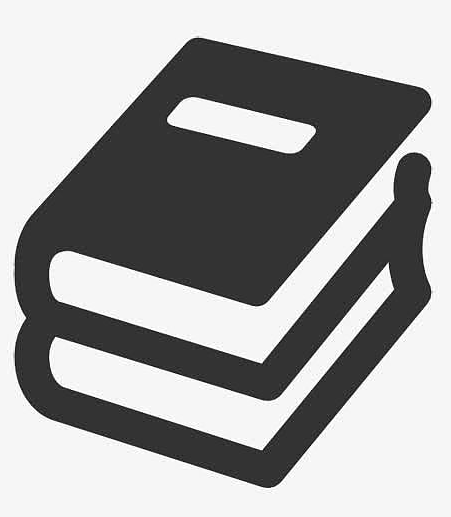批判性思维技巧 Critical Thinking Skills Stella Cottrell 文字版
文章类别:
- 23 11 月, 2022
- 0 条评论

 (0 次顶, 0 人已投票)
(0 次顶, 0 人已投票)你必须注册后才能投票!
快捷索引
批判性思维技巧
概述:
批判性思维技巧采取批判性思维技巧来分析看似令人费解的事物,批判性思维技巧的解释非常到位,例子也比较实用。能让你不断了解和开发在每个思维阶段的思维认知能力。
批判性思维技巧
内容截图:
批判性思维技巧 目录:
Contents
Introduction
Glossary
Acknowledgements
1 What is critical thinking?
Introduction
What is critical thinking?
Reasoning
Why develop critical thinking skills?
Underlying skills and attitudes
Self-awareness for accurate judgement
Personal strategies for critical thinking
Critical thinking in academic contexts
Barriers to critical thinking
Critical thinking: knowledge, skills and
attitudes
Priorities: developing critical thinking
abilities
Summary
2 How well do you think? Develop
your thinking skills
Introduction
Assess your thinking skills
Scoring Sheet
Focusing attention
Focusing attention: Identifying difference
Focusing attention: Recognising sequence
Categorising
Activity: Categorising text
Close reading
Information about the sources
Answers to activities in Chapter 2
3 What’s their point? Identifying
arguments
Introduction
The author’s position
viii
xii
xiv
Activity: Capturing the author’s position
Argument: Persuasion through reasons
Identifying the argument
Activity: Identifying simple arguments
Activity: Reasons and conclusions
Hunting out the conclusion
Summary of features
Summary
Information about the sources
Answers to activities in Chapter 3
4 Is it an argument? Argument and
non-argument
Introduction
Argument and disagreement
Activity: Argument and disagreement
Non-arguments: Description
Non-arguments: Explanations and
summaries
Activity: What type of message?
Distinguishing argument from other
material
Activity: Selecting out the argument
Summary
Information about the sources
Answers to activities in Chapter 4
5 How well do they say it? Clarity,
consistency and structure
Introduction
How clear is the author’s position?
Internal consistency
Activity: Internal consistency
Logical consistency
Activity: Logical consistency
Independent reasons and joint reasons
Activity: Independent and joint reasons
Intermediate conclusions
Intermediate conclusions used as reasons
Activity: Intermediate conclusions
Summative and logical conclusions
Activity: Summative and logical
conclusions
Logical order
Activity: Logical order
Summary
Information about the sources
Answers to activities in Chapter 5
6 Reading between the lines:
Recognising underlying assumptions
and implicit arguments 85
Introduction 85
Assumptions 86
Activity: Identify the underlying
assumptions 8 7
Identifying hidden assumptions 88
Implicit assumptions used as reasons 89
Activity: Implicit assumptions used as
reasons 90
False premises 9 1
Activity: False premises 92
Implicit arguments 93
Activity: Implicit arguments 94
Denoted and connoted meanings 95
Activities: Associations and stereotypes 97
Activity: Denoted and connoted meanings 98
Summary 99
Information about the sources 99
Answers to activities in Chapter 6 100
7 Does it add up? Identifying flaws
in the argument 105
Introduction 105
Assuming a causal link 106
Correlations and false correlations 107
Activity: Identify the nature of the link 108
Not meeting the necessary conditions 109
Not meeting sufficient conditions 110
Activity: Necessary and sufficient
conditions 111
False analogies 112
Activity: False analogies 113
Deflection, complicity and exclusion 114
Other types of flawed argument 115
Unwarranted leaps and ‘castle of cards’ 116
Emotive language; Attacking the person 11 7
More flaws 118
Misrepresentation and trivialisation 119
Tautology; Two wrongs don’t make a right 120
Summary 121
Information about the sources 121
Answers to activities in Chapter 7 122
8 Where’s the proof? Finding and
evaluating sources of evidence 125
Introduction 125
Primary and secondary source materials 126
Searching for evidence 127
Literature searches 128
Reputable sources 129
Authenticity and validity 130
Currency and reliability 131
Selecting the best evidence 132
Relevant and irrelevant evidence 133
Activity: Relevant and irrelevant evidence 134
Representative samples 135
Activity: Representative samples 136
Certainty and probability 137
Sample sizes and statistical significance 138
Over-generalisation 139
Controlling for variables 140
Facts and opinions 141
Eye-witness testimony 142
Triangulation 143
Evaluating a body of evidence 144
Summary 145
Information about the sources 145
Answers to activities in Chapter 8 146
9 Critical reading and note-making:
Critical selection, interpretation and
noting of source material 147
Introduction 147
Preparing for critical reading 148
Identifying the theoretical perspective 149
The relation of theory to argument 150
Categorising and selecting 151
Accurate interpretation when reading 152
Making notes to support critical reading 153
Reading and noting for a purpose 154
Concise critical notes: Analysing argument 155
Concise critical notes: Books 156
Concise critical notes: Articles and papers 157
Critical selection when note-making 158
Activity: Critical selection 159
Commentary on critical selection 161
Note your source of information 162
Summary 164
Information about the sources 164
Answers to activities in Chapter 9 165
10 Critical, analytical writing:
Critical thinking when writing
Introduction
Characteristics of critical, analytical
writing
Setting the scene for the reader
Activity: Setting the scene for the reader
Writing up the literature search
Words used to introduce the line of
reasoning
Words used to reinforce the line of
reasoning (2)
Signposting alternative points of view
Words used to signpost conclusions
Words and phrases used to structure
the line of reasoning
Drawing tentative conclusions
Activity: Writing conclusions
Summary
Information about the sources
Answers to activities in Chapter 10
11 Where’s the analysis? Evaluating
critical writing
Introduction
Checklist for Essay 1
Evaluate Essay 1
Evaluation of Essay 1
Commentary for Essay 1
Checklist for evaluating Essay 2
Evaluate Essay 2
Evaluation of Essay 2
Commentary on Essay 2
Evaluating your writing for critical
thinking 196
Summary 198
Texts for activities in Chapters 8, 9
and 11 199
Practice activities on longer texts 207
Practice 1: Features of an argument 208
Answers to Practice 1: Features of an
argument 212
Practice 2: Finding flaws in the
argument 215
Answers to Practice 2: Finding flaws in
the argument 219
Practice 3: Features of an argument 223
Answers to Practice 3: Features of an
argument 229
Practice 4: Finding flaws in the
argument 234
Answers to Practice 4: Finding flaws in
the argument 239
Appendix: Selected search engines
and databases for on-line literature
searches 245
Bibliography
Index
批判性思维技巧
【注】
《批判性思维技巧》从网络收集,免费分享!对您有助,是本站最大的荣幸。
《批判性思维技巧》禁用于商业用途!如果您喜欢《批判性思维技巧》,请耐心下载,ED2K资源需要有人做种,有时冷门资源需挂机等待。有特别需要的请去论坛求助资源,推荐大家用百度云盘共享。
书我要,下载先! http://www.books51.com/ 祝您开卷有益!
会员福利
同类文章
文章类别:
本文链接: http://www.books51.com/269553.html
【点击下方链接,复制 & 分享文章网址】
批判性思维技巧 Critical Thinking Skills Stella Cottrell 文字版 → http://www.books51.com/269553.html |
上一篇: 班级经营 林进材 文字版
下一篇: 印光大师家庭教育嘉言录 守拙 编 扫描版

 (0 次顶, 0 人已投票)
(0 次顶, 0 人已投票)你必须注册后才能投票!

/thumb.jpg)



最新评论